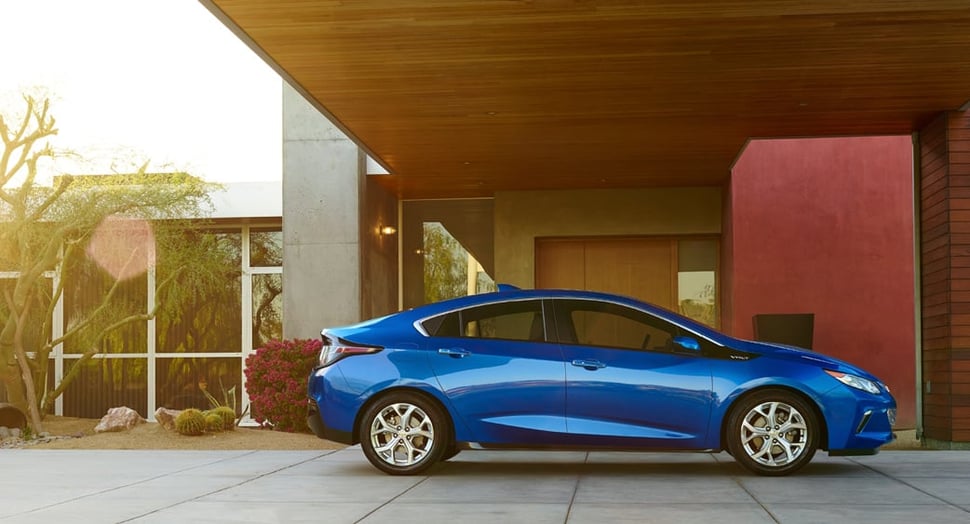 Don’t plan on driving for a bit? Keep your electric vehicle in good condition by following these tips.
Don’t plan on driving for a bit? Keep your electric vehicle in good condition by following these tips.
There will inevitably be times when you don’t need to use your vehicle. During these periods, your electric vehicle should be properly stored.
All cars, regardless of engine type, are built to be driven - not to sit in storage. As such, car owners need to take precautions if the vehicle will be unused for an extended period of time.
These tips will help you properly store your EV:
Keep the high-voltage battery charged
The battery pack that powers your vehicle should always have a charge of between 10% and 80%, according to Cars.com. Maintaining a charge that’s over or under this range can harm the lithium ion battery, or reduce its capacity.
There are a few methods for ensuring your vehicle stays within this range, and the one you choose may come down to the manufacturer’s advice.
Some, like Tesla, recommend keeping the vehicle plugged in. This will allow the heating or cooling system to run as needed. If you decide to leave it plugged in, consider setting a charge limit so the battery won’t fill to 100%.
Other manufacturers, like Nissan, recommend storing it unplugged. Nissan’s vehicles will enter a “deep sleep” mode when left unplugged, according to Green Car Reports.
If you choose to leave your car unplugged in storage, be sure it’s charged adequately first. Then, put the cables away neatly, coiled loosely and unbent, and in a dry area, Driving Electric recommended.
Unplug or trickle-charge the 12-volt battery
Most electric vehicles have two batteries. While the high-voltage battery discussed above is the one that fuels your car, the 12-volt battery powers accessories throughout the vehicle.
Certain systems are constantly drawing on the 12-volt battery. To avoid wear on it, either disconnect it from the car, or attach it to a trickle charger, which connects to a standard 120-volt plug.
If you’re storing the car for more than 30 days, unplugging it is the better option, Bob Taenaka, senior technical leader of Battery and Cell System Development at Ford, told Cars.com. To unplug the battery, disconnect the negative terminal (usually black) first, then the positive one (typically red). Store the cables so they’re not touching any metal.
Once you do this, you won’t be able to use the unlock button from your key fob, so be careful to not accidentally lock your key inside.
Turn off energy-draining features
Certain features will automatically engage and use the battery unless you specifically turn them off. Every car is unique, but a few examples include automatic map updates, pre-warming or cooling and predictive battery reconditioning. Check your owner’s manual to find which features will drain your battery and how to turn them off.
Turn the tires
As with any vehicle, the tires on your EV will flatten under the weight of your car over time if they’re not rotated. Avoid this issue by storing it on lifts to take the weight off of the tires. Alternatively, make a point to take your car for a spin every few weeks so they rest on another part of the tire.
Choose the right storage location
Choose an enclosed location where you can leave your vehicle. A garage protects it from the elements and has minimal leaks so that water damage isn’t a threat. A relatively consistent temperature is also ideal. Additionally, a power source will help you maintain the batteries if you choose to leave them plugged in or hooked up to a trickle charger.
If you don’t have a garage, you may have self-storage options available to you. If keeping your vehicle in an enclosed location isn’t an option, keep it protected with a waterproof cover.
If your garage at home isn’t outfitted with a residential EV charger, consider installing one. This will not only make storage easier if you need to keep it hooked up to a charging portal, but also make your day-to-day drive simpler when you begin using your car more frequently.
The professionals at Webasto will help you determine which residential charger is best for your home, and can also install it for you. To learn more about residential charger options for your EV, check out our options online.
Sources:
https://www.cars.com/articles/not-driving-your-electric-vehicle-during-coronavirus-lockdown-heres-how-to-keep-it-humming-421345/
https://www.greencarreports.com/news/1127610_keep-your-parked-electric-car-and-its-battery-healthy-with-these-simple-tips

